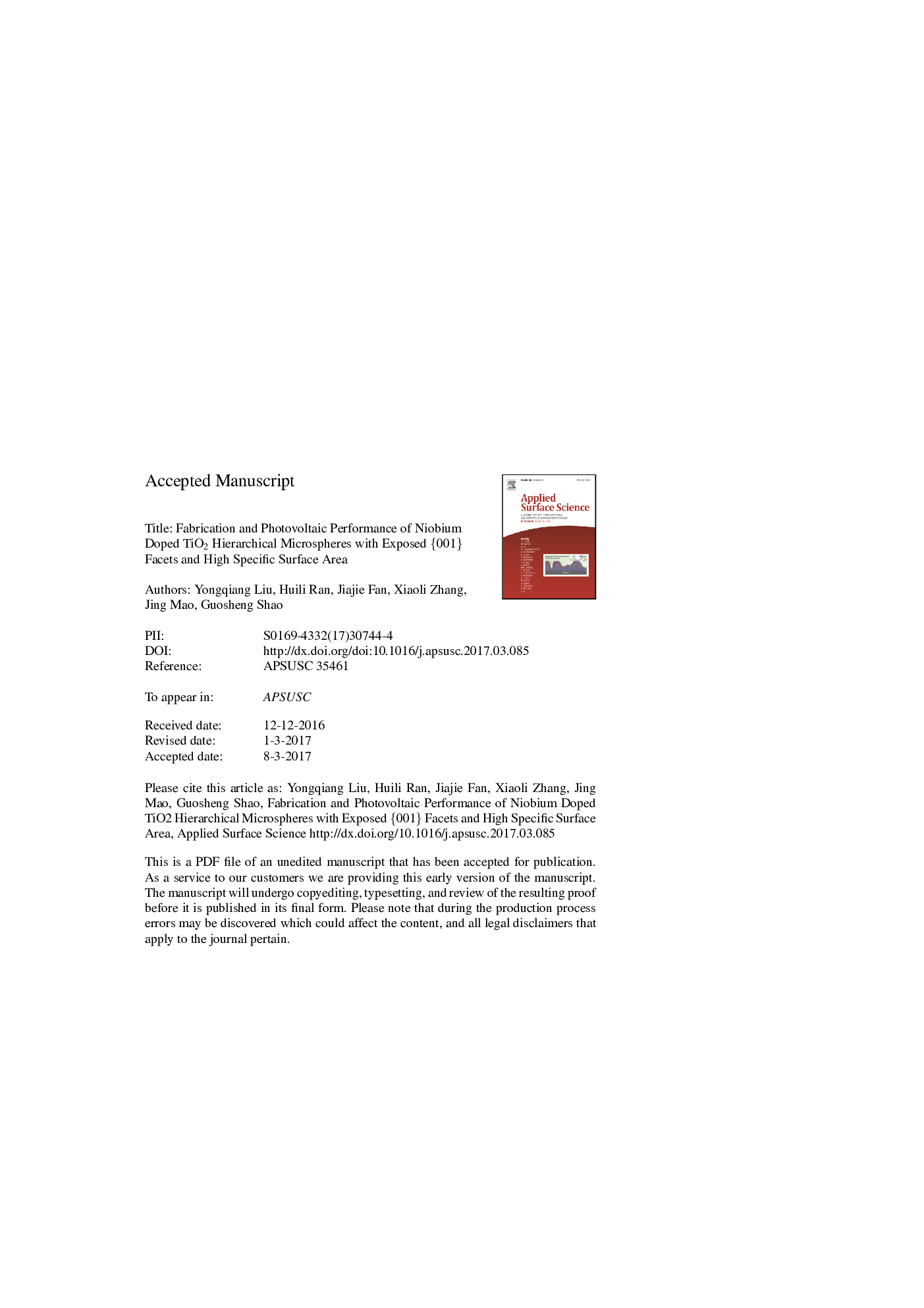| کد مقاله | کد نشریه | سال انتشار | مقاله انگلیسی | نسخه تمام متن |
|---|---|---|---|---|
| 5347981 | 1503559 | 2017 | 37 صفحه PDF | دانلود رایگان |
عنوان انگلیسی مقاله ISI
Fabrication and photovoltaic performance of niobium doped TiO2 hierarchical microspheres with exposed {001} facets and high specific surface area
دانلود مقاله + سفارش ترجمه
دانلود مقاله ISI انگلیسی
رایگان برای ایرانیان
کلمات کلیدی
موضوعات مرتبط
مهندسی و علوم پایه
شیمی
شیمی تئوریک و عملی
پیش نمایش صفحه اول مقاله

چکیده انگلیسی
The niobium doped hierarchical anatase TiO2 microspheres, which are consist of a serried nano-thorns and plicate nano-ribbons with exposed {001} facets, were synthesized using hydrothermal method followed by heat treatment. The effects of niobium on the microstructures and photovoltaic performances of the dye-sensitized solar cells (DSSCs) were studied. The results revealed that Nb5+ doping replaces Ti4+ cations in TiO2 lattice, and the bandgap of the films varies with increasing Nb doping concentration because of the downshift of the conduction band minimum (CBM). The niobium-doped TiO2 DSSCs with moderate loadings show enhanced performance comparing with their pure TiO2 counterparts. Optimally, the conversion efficiency of the Nb-3.5 (Nb 3.5Â mol%) DSSC is 4.99%. This is higher than that (4.39%) of pure TiO2 cells by 13.7%. This is due to the fact that the Nb-doped solar cells have increased the number of the photo-induced electrons because of their exposed (001) facets and higher specific surface area; and enhanced electrons collection and transport because of the downshifted CBM of the Nb-doped TiO2. However, heavy Nb doping results in the decrease of the performance of the niobium-doped cells due to the excessive defects within the Nb-TiO2 samples resulting in enhanced charge recombination at defects.
ناشر
Database: Elsevier - ScienceDirect (ساینس دایرکت)
Journal: Applied Surface Science - Volume 410, 15 July 2017, Pages 241-248
Journal: Applied Surface Science - Volume 410, 15 July 2017, Pages 241-248
نویسندگان
Yongqiang Liu, Huili Ran, Jiajie Fan, Xiaoli Zhang, Jing Mao, Guosheng Shao,